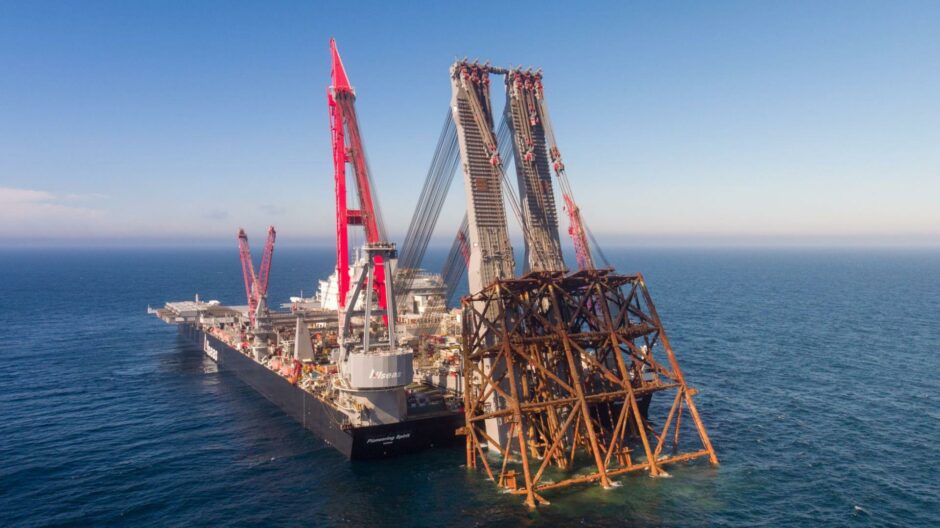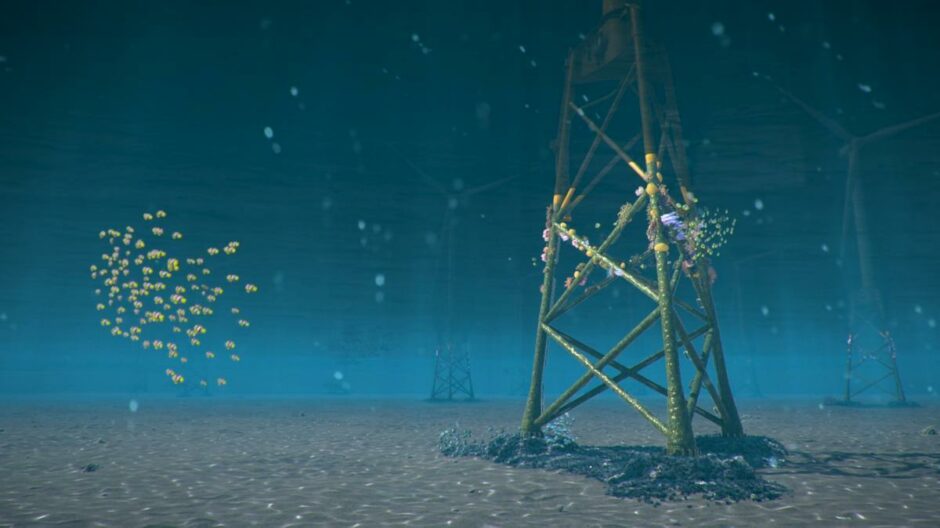
A discovery of “deepwater coral” on the legs of the Ninian Northern platform has rekindled a debate on whether oil installations should be fully removed from the seabed.
Lophelia Coral, a cold-water species that grows in the deep waters, has been recovered from the 40-year-old structure which was removed from the sea earlier this year by the Pioneering Spirit heavy lift vessel.
The Ninian Northern jacket is now being decommissioned at Lerwick in Shetland.
The head of Baltic Sea area development at Equinor, took to social media last week to discuss the find and said it is “a reminder that nature will always find a way”.
Adding that it “raises questions to the debate surrounding leaving parts of existing infrastructure in place”, prompting discussion on Linkedin.
In the North Sea, the OSPAR convention requires man made structures like oil platforms to be fully removed from the seabed at the end of their use.
However, the concept of rigs to reefs has been growing in other areas of the world like the Gulf of Mexico where there are over 500 oil and gas platforms that have been turned into artificial reefs.
The post breathed new life into the debate surrounding rigs to reefs in Scotland, with people expressing opinions both for and against the idea.
Arguments
Senior consultant Paul Brindley opposed the idea of leaving structures in the sea to cultivate reefs, sighting OSPAR: “It doesn’t beg any questions at all – it wouldn’t have been there at all if the jacket wasn’t installed so isn’t naturally occurring.
“It possibly could be transplanted but the sea is not a dustbin for the human race that’s what OSPAR decided in 1998 and that still remains in force today.
“If you let the 300-400 oil industry steel structures remain in place what are you going to do with the 20000 wind turbines that are due to be installed?”
However, the director at MCQ HSE Consulting, Steve McHugh, argued: “The best practical environmental option should be considered on a case by case basis to determine the decommissioning plans for each facility.
“Protection of cold water corals and other marine life strengthens the Rigs to Reefs option.
“The leaving in place of a hundred or so jackets is minimal compared to the thousands of shipwrecks that lie in our waters and would have a positive impact on the environment and fish stocks and fisheries.”
Decommissioning manager Ping Teo also supported the idea of Rigs to Reef, saying: “Strategically leaving a number of footings with these deep sea corals (not 10 of thousands of footings) could enhance biodiversity goals of OSPAR. There are sufficient science and post reefing monitoring data around the world to demonstrate this fact.”
Lophelia coral
Lophelia (Lophelia pertusa) is found in the North-east Atlantic and typically appears in waters between 4 – 8°C.
The biological diversity of Lophelia reef communities can be three times as high as the surrounding soft sediment.
Species found in these reefs include; the redfish Sebastes viviparous and the squat lobster Munida sarsi.
Lophelia reefs are also populated by other hard corals such as; Madrepora oculata and Solenosmilia variabilis.
There were plenty of comments that were more interested in the type of coral found on the jacket rather than debating the pros and cons of Rigs to Reefs.
This was in response to the last line of the post which read: “If anyone can tell me a bit more about the species – I’d love to know!”
Commenters wrote about and linked to articles covering the species of coral in question, Lophelia.
According to LinkedIn users, Lophelia is a cold water coral species that is “long lived, slow growing, habitat forming”.
Retired drilling fluids and waste management adviser Chris Higgins out of network shared a story: “Lophelia colonies were discovered years ago on the Darwin Banks west of Shetland by the oil industry.
“This was reported to the government but not a lot happened.
“Eventually reported by the media. The result was that the banks were then trawled and I think suffered significant damage. There were Lophelia colonies found on other North Sea Jackets.
“If the conditions are right – water depth, darkness and current, they will establish.”
What is Rigs to Reef?
The idea of repurposing a decommissioned oil rig as a coral reef is far from a new one.
First proposed nearly 40 years ago in 1984, the US Congress approved the National Fishing Enhancement Act. This recognised the benefits of artificial reefs and, encouraged states to come up with plans to turn defunct rigs into reefs.
The controversial process involves turning legacy assets into underwater environments where marine life can thrive.
However, OSPAR (Oil Spill Prevention, Administration and Response) decided in 1998 that this would not be put into practice in Europe unlike other parts of the world such as the Gulf of Mexico.

 © Supplied by Hannah Mary Goodlad
© Supplied by Hannah Mary Goodlad © Supplied by Orsted
© Supplied by Orsted